There’s often an allure when it comes to knives issued or used
(more on that later) to one special forces group or another. People in
general look up to them and manufacturers want their products to be
associated to these groups because it translates into larger amount of
sales. It’s a known fact that if a knife becomes the “official” knife of
x group, a Y % of sales is guaranteed. I think it’s an interesting
topic to cover. On one side its just interesting to know what the
different forces carry, on the other its more food for thought regarding
your own choices and making up your mind on what to go for when it
comes to selecting a knife, may it be a utility knife, a knife maybe for
a SEK kit or even for defense.
What actually gets Issued
If
you listen to manufacturers, it seems that every special operations
group carries not one, but a hundred different knives. Knife
manufacturers and custom makers send their knives to the different
special forces hoping they will choose to carry their product. Some
aren’t fit for the job, others are very nice tools, but most end up in
boxes where they pile up by the dozens.
Lets first take a look at what actually gets issued.
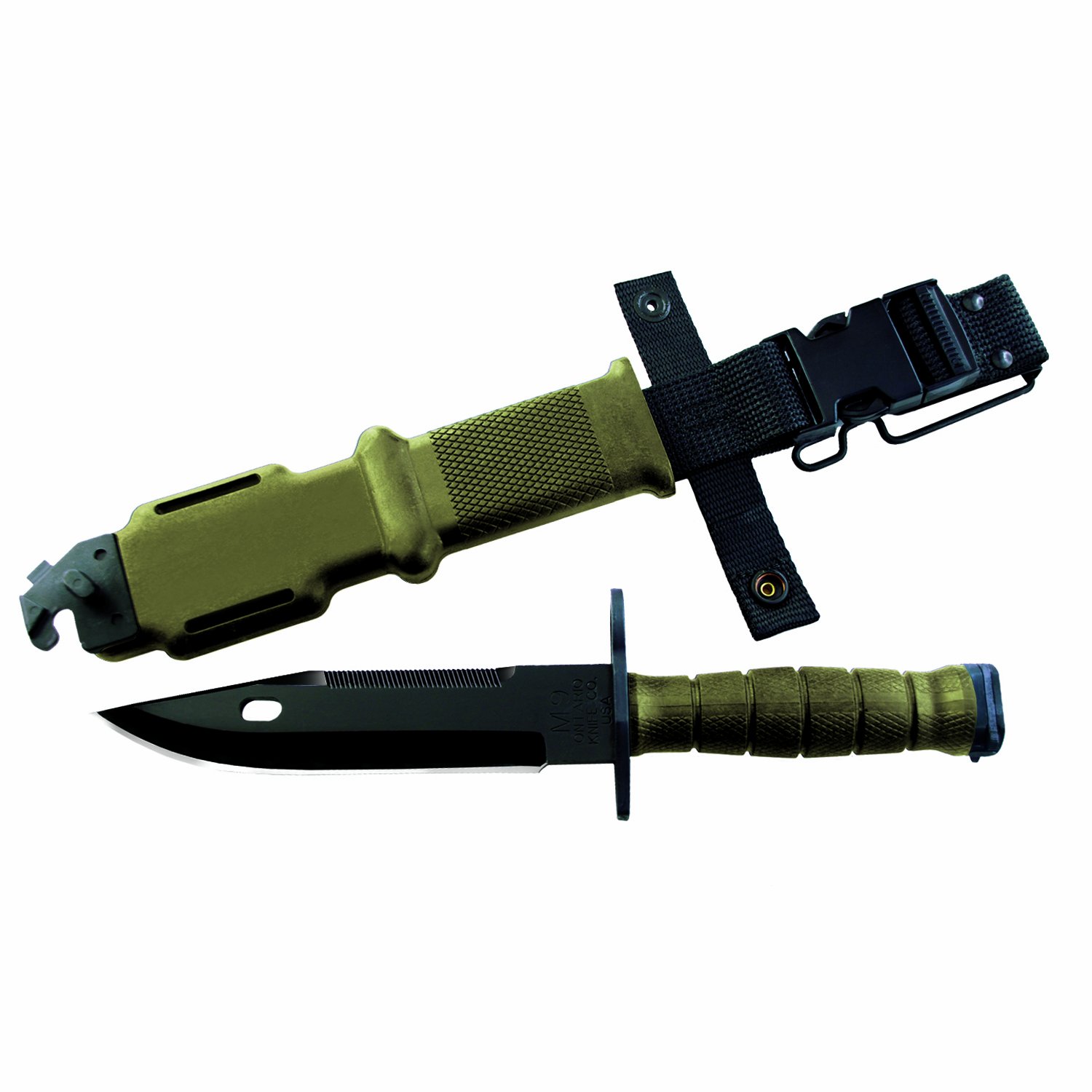
M9 Bayonet:
Officially adopted by the United States in 1984, Charles A. "Mickey"
Finn creation is a utility knife bayonet that is also an effective wire
cutter when combined with the scabbard. The 7 inch blade strongly
resembles its previous incarnation, the Buck 184 “Buckamster”.
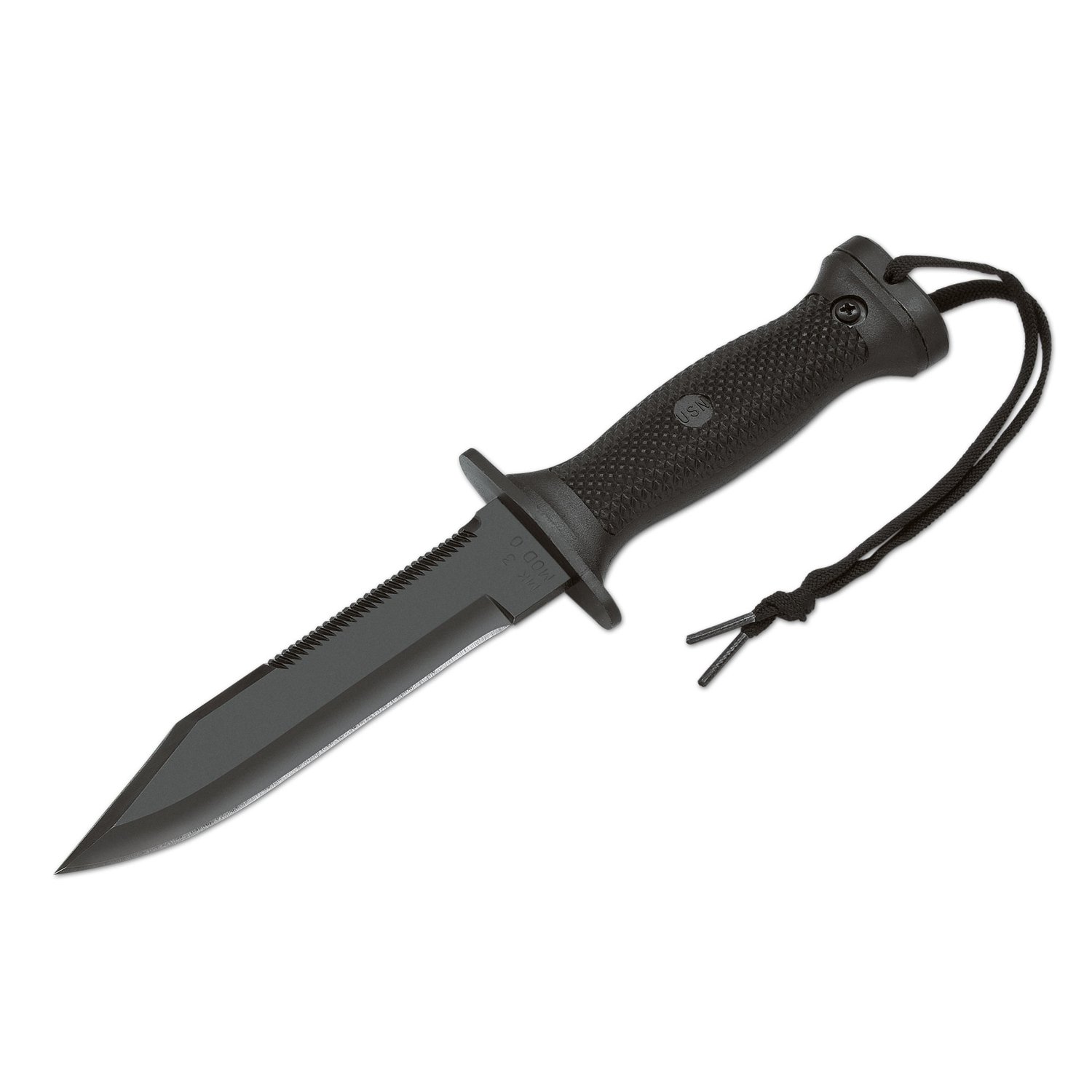
Ontario 6141 MK 3 Navy Knife $92.99
OntarioMKIII Navy Knife:
The Mark 3 has a 6 inch 440A stainless steel blade and is standard
issued to Navy SEALS. Rumor has it these are dumped pretty soon after
training. In spite of this there’s nothing wrong with the knife itself.
The knife can be used for prying, as a hammer, and the tip will
penetrate well when used as a weapon. The steel could be better but
really for its intended use its more than adequate and many people have
found it to be an outstanding utility/GP knife.
Ontario 6504 OKC3S Marine Bayonet:
Marines get their own knives, issued exclusively to the United States
Marine Corps. It sure is a well made solid knife with a sound and
functional blade shape. The 8" blade is made of 1095 steel. The handle
is made of grooved Dynaflex. It's a bit on the larger side, but there's
not a lot that can go wrong with this knife.
KA-BAR: The
tried and true KA-BAR is provided to Navy SEALS upon graduation. On One
side there’s the SEAL logo and on the other there’s the name of a SEAL
that has died in combat. Except for these engravings, it’s a typical
K-BAR with its leather grip and sheath. This knife will rarely get used
for obvious reasons.
The KA-BAR itself is still in active
service with the Army, Navy (as the USN Mark 2 Utility Knife) and USMC
(Knife, Fighting Utility). It has a 7-inch blade made of 1095 steel
which is a very good steel for such a knife. Combined with its time
proven design, it is indeed a tool and weapon that can effectively
perform a number of tasks without compromising.
The KA-BAR is a
legend in the knife world but it is not perfect. A modern-day survivor
might want to avoid the leather washer grip and sheath which can rot and
go with synthetic versions. Dont fall for the negative hype though.
Well taken care of leather handles and sheaths can and have lasted for
centuries, even with honest hard use and a bit of abuse. I happen to own
a couple knife with leather sheaths that are over a hundred years old
and the sheatha are still very much functional. The narrow tang is also a
weaker design compared to a full tang and can bend under enough
leverage. Again, it can take a lot of hard use, and even if bent
slightly the knife is still functional. On the other hand the narrow
tang makes it much lighter than a full tang version.
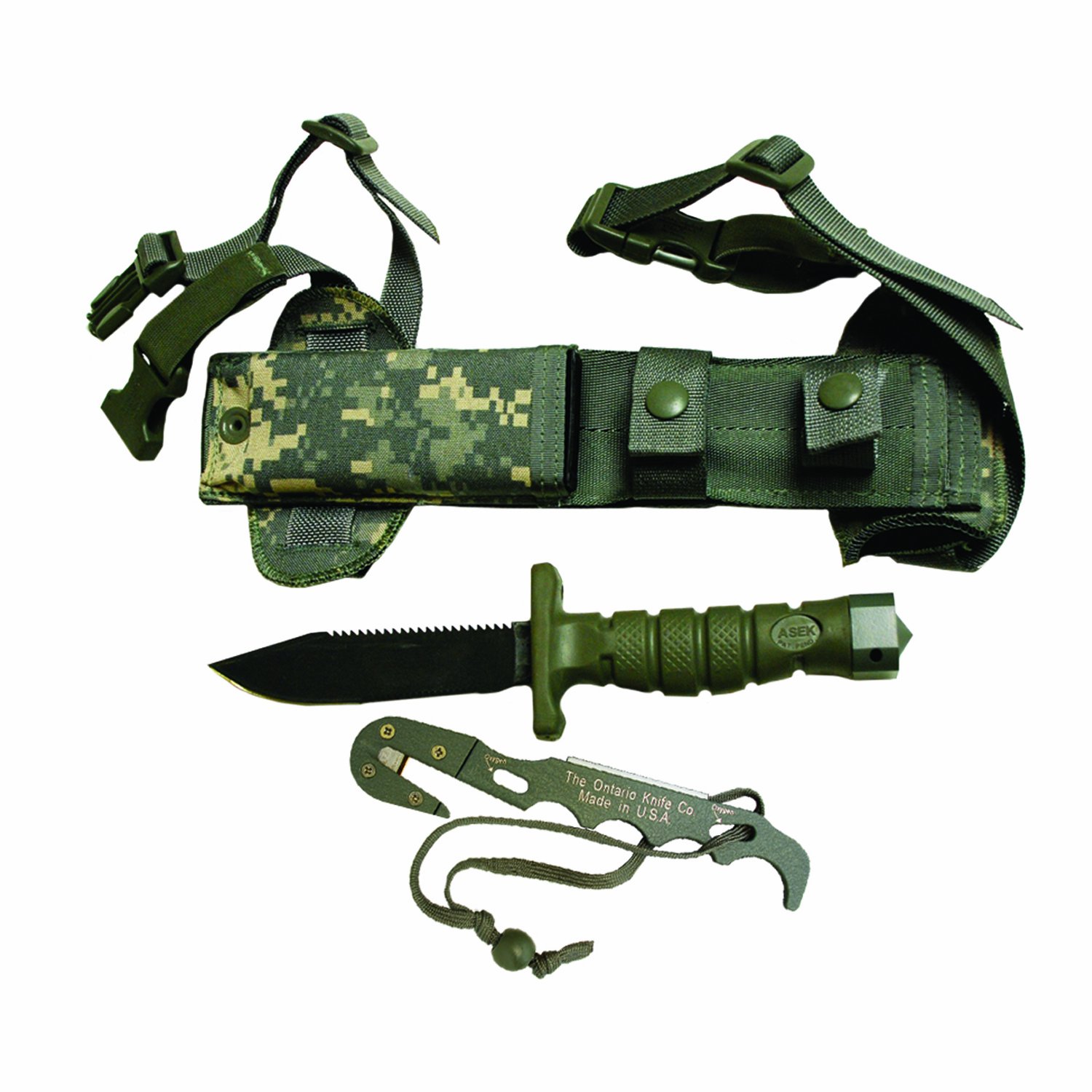
ASEK Survival Knife:
The Air Crew Survival Egress knife made by Ontario entered service with
the U.S. Army in 2003 but is often chosen by other branches as well
because of its practicality and light weight. The 1095 blade is 5 inches
long, the generous cross piece means the hand wont be slipping forward
when used as a weapon or trusting during use.

Yarborough: Made by Chris Reeve, its also available for civilians as “The Green Beret Knife”. The
“Yarborough”, is a tough, practical knife, made of CPM S35VN stainless
steel with a 7 inch balde. The Yarborough is received by the Special
Forces upon graduation. Like with the SEAL KA-BAR, chances are that it
will be treasured rather than used by the person that receives it.
What actually gets Carried
Issued
doesn’t mean used. In some cases what a person got issued isn’t what he
liked, or they are looking for something else. Maybe they want a
smaller, lighter knife or maybe a better one, so they leave the issued
one behind. In that case a visit to the nearest PX/BX offers other
commercial options to choose from. The criteria still follows the same
guidelines though: Around 6 inches long, tough yet light and hopefully
not very expensive. Each person will pick whatever it is they favor.
Keep in mind that not everyone is a knife fanatic or collector, so
choices vary. SEALs and Special Forces guys tend to know a bit more
about them and will often buy their own quality knives. Some of the most
common choices are:
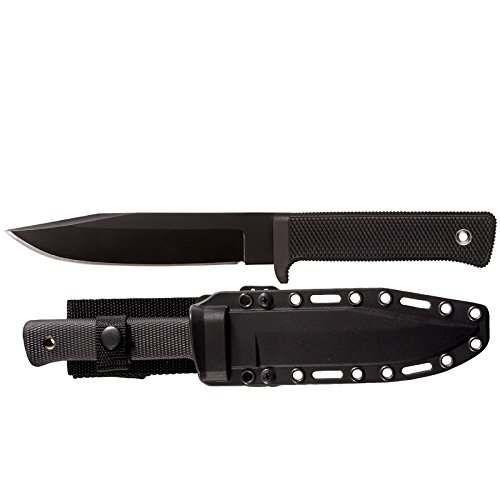
Cold SteelSRK:
The SRK is tough, affordable and made of AUS 8A Stainless. Yes, there
are better knives, but its very hard to beat for the money. Keep in mind
troops aren’t exactly swimming in money. For around 60 bucks a soldier
gets a 6 inch knife that is well designed with classic lines, a
comfortable handle and just over 8 ounces. It can tolerate considerable
abuse so it wont shy away from poking holes into tin cans or being used
as a prybar. Those that need or want something bigger and don’t mind the
weight will go for the Cold Steel Recon Scout.
Ka-Bar Becker BK7 Combat Utility Fixed Blade Knife: Another
popular choice. The BK7 is a heavy 7 inch knife but it compensates by
getting more knife in exchange for that extra weight. It has a wide
blade, made of 1095 steel and the full tang gives it that extra
resistance you might be looking for.
The SOG Seal Team Elite $94.07
SOG SEAL Team Elite and SEAL Pup:
These actually honor their name and are often chosen by Navy SEALS
looking for a good knife. 7 inch AUS8 blade with a nice penetrating tip,
the tang is extended so as to use it as a hammer/glass breaker/skull
crasher. Its light, under $100 bucks and has been tested extensively for
tip abuse resistance and water corrosion. The SEAL Pup is a shorter version of the same knife at 4.75”.
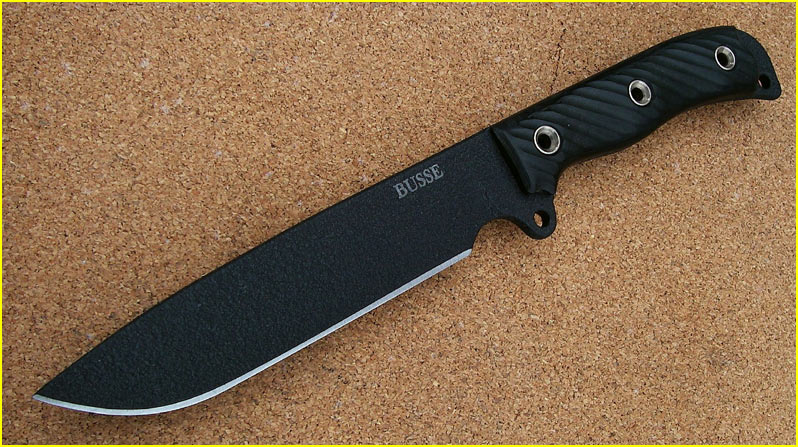
Busse BossJack: There’s
at least one Special Forces team that I know of where one of them
ordered a Busse Boss Jack for each of the members. The knife is pricy,
but then again the steel, craftmanship and abuse resistance are
outstanding. I know that Busse knives are often chosen by both SF and
SEAL guys that know a thing or two about knives and appreciate the
quality. I’ve reviewed the Boss Jack before so check my youtbube videos
if interested.
Fallkniven A1 Survival Knife $195.61
Fallkniven: The A1, F1 and S1
are common choices for service men looking for an excellent production
knife within reasonable price ranges. These Swedish-made knives are of
outstanding quality, with excellent steel being used and properly heat
treated. People just are not let down by Fallkniven knives. They aren’t
cheap, but the VG10 steel used is excellent, they are light, resistant
and have a classic, time-proven blade geometry that works very well for
most tasks.
While writing this article I received an email from a friend of mine that was Army Special Forces, here’s part of his reply:
"I was issued a Gerber Multiplier as a tool before the SF thing, was issued a M9 bayonet at every unit over the years and after SF--as with all graduating SF guys--got a Yarborough knife. The Yarborough is a good knife, but for various reasons I never carried it in the field (liked others more, didn't want to screw it up, etc.). I tended to carry, for a larger belt knife anyway, a Fallkniven A1 or S1, depending on the year and what I was doing.The Fallknivens are some of the best field/combat/fighting knives I've ever had, and quite durable with use. They make some nice hunting type knives, too. Swedish company, but they sell in the states and UK a fair bit."
What
gets issued isn’t always the best but you still know there’s a certain
standard, so military issued knives can be great budget choices for
prepers and survivalists. Then of course, for a bit more money there are
options that can offer more. Be careful though. Sometimes companies
advertise their knives as super doper Chairborn Commando, put a crazy
price tag on them, and the knife still cant do for you what the humble
KA-BAR can.
FerFAL










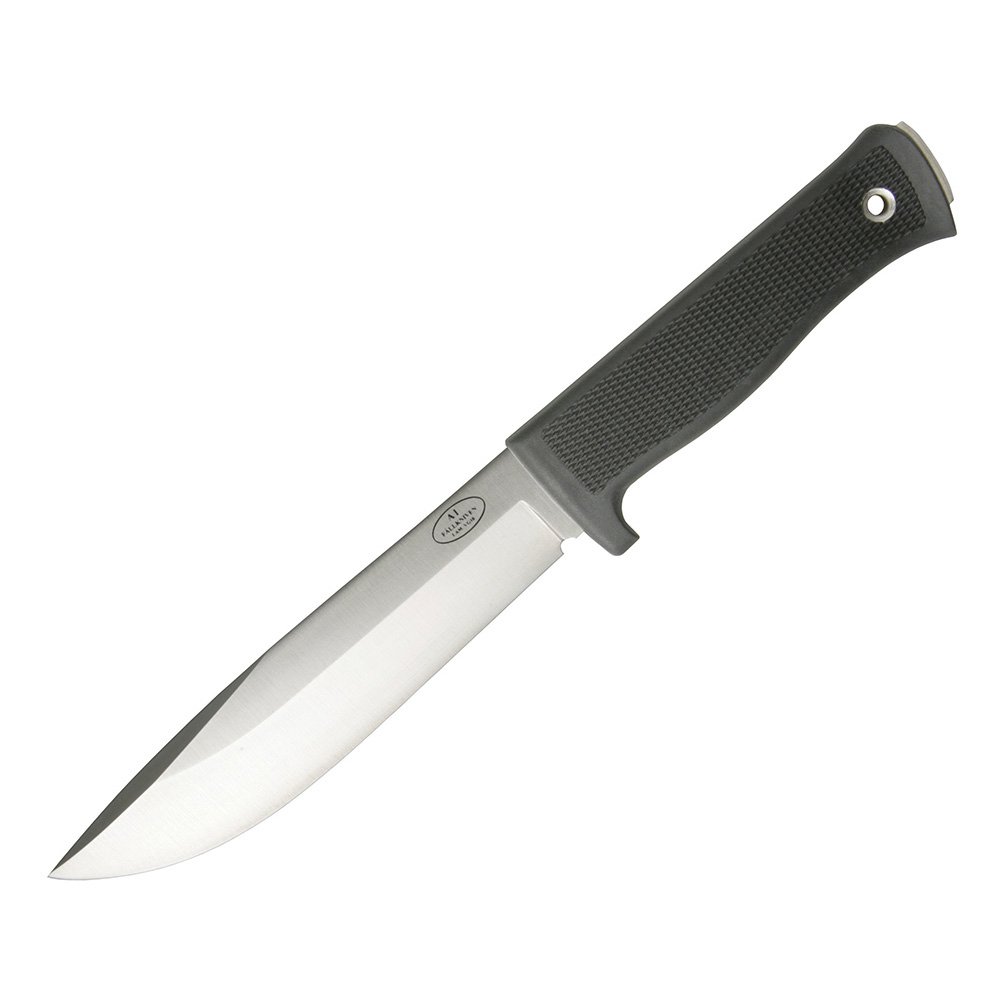


12 comments:
Can you give any recommendations for a good fighting knife to have around the house in case of a home invasion?
Size, portability and multifunctionality will not be a concern for me in deciding which knife I could keep in the house for defensive purposes. My criteria is different than that needed by soldiers because portability, lightweightness, and multifunctionality isn't important.
I've also overheard a cop in my city telling someone that it is illegal to carry a knife with a blade over 2 inches long. Do you have any recommendations on such small knives, that may even fit on a keychain?
tom d
Ferfal,
Forty years ago I carried a Buck General in RVN. I was a Foward Observer with the Arty, but infantry types always borrowed it in the jungle.
Vampire Flames
Survival knives are sort of the jack of all trades. Big and long enough for some chopping and stabbing/slashing. Light and small enough to carry and conceal all the time. And strong or cheap enough for versatile uses.
Makes sense to carry one type of blade that can do most jobs.
tom d, there are several Amazon links on the side of the page for large Cold Steel knives that might be suitable for your purposes. I selected my Cold Steel 12" Bowie knife from among these because it was cheap and scary-looking.
Granted, there are much better quality knives than these, but you can't beat the price, and the cheaper steel they're made from can still take a razor edge.
"I've also overheard a cop in my city telling someone that it is illegal to carry a knife with a blade over 2 inches long."
This may or may not shock you, but cops don't always know the law. Find out what the law actually says, and/or get a lawyer's opinion, and carry a copy of the law with you.
What? Where is my Ka-Bar?!? Must be a new custom, at least compared to an old frog who graduated from BUD/S a few decades ago.
My daily carry now (except for pajama time) is a Cold Steel Vaquero Grande, which rides in my front pocket. Always ready, a flick of the wrist and it's open, and one "bad-ass blade."
Hi Travis! Tough luck man! :-)
Here's the link, check the two pics in the thread,to me it looks like an ordinary KABAR except for the engravings.
http://www.knifeforums.com/forums/showtopic.php?tid/820871/tp/5/
FerFAL
Tom D: Look at the CS Kukri Machete or Magunm Kukri Machete. Both cheap, easily sharpened, and deadly effective.
There are tons of good knives out there, but if you don't have a good way to carry it and conceal it, it won't be any good to you (kinda like a defensive handgun in that way).
I have carried the Sog Seal Pup Elite and the Benchmade Nimravus as midsize fixed blade. However the knife I'm most likely to have on me is my CRKT M16-14Z, the large zytel handled, tanto bladed folder designed by Kit Carson. Effective for just about every task and intimidating as hell. Good enough for me.
If size, portability and multifunctionality are not a concern, then a nice 12-inch machete would work really well.
Folders are great for everyday carry, but they aren't much good for real survival use. Opening a folder under stress is also questionable.
I would like something similar in size and weight to the Cold Steel Roach Belly, but with a more versatile blade shape.
It's also interesting that the kukri and bowie were primarily outdoor work knives which were later taken into combat. I think that's a good argument, that everyday familiarity with a single blade type, creates muscle memory easily accessed in a stressful combat situation.
This also opens up the possibility of using cheap folding knives like the CRKT M16 as survival knives. Which once stressed beyond their capacity can be cheaply replaced with the same blade type. Thus keeping that muscle memory for that specific knife alive, beyond the lifespan of the knife itself.
In-line with the idea of being very familiar with ones blade and by consequence very confident with it. It may be worth replacing ones steak and chopping knives in the kitchen with the same knife one carries everyday. Not only will this greatly improve ones handling of the knife through everyday use but also the blade itself will become less intimidating to your yourself as a weapon. Likely increasing your willingness to draw the knife, before actually needing it. This seems especially useful for those who don't go camping often, or don't have many opportunities to use their knife.
You left out one of the more interesting large issue knives/bayonets, the new USMC bayonet OKC-3s. It is designed to function both as a combat knife and bayonet, the design was refined by the USMC martial arts cadre.
A bit more than a 100,000 have been issued so far.
Post a Comment